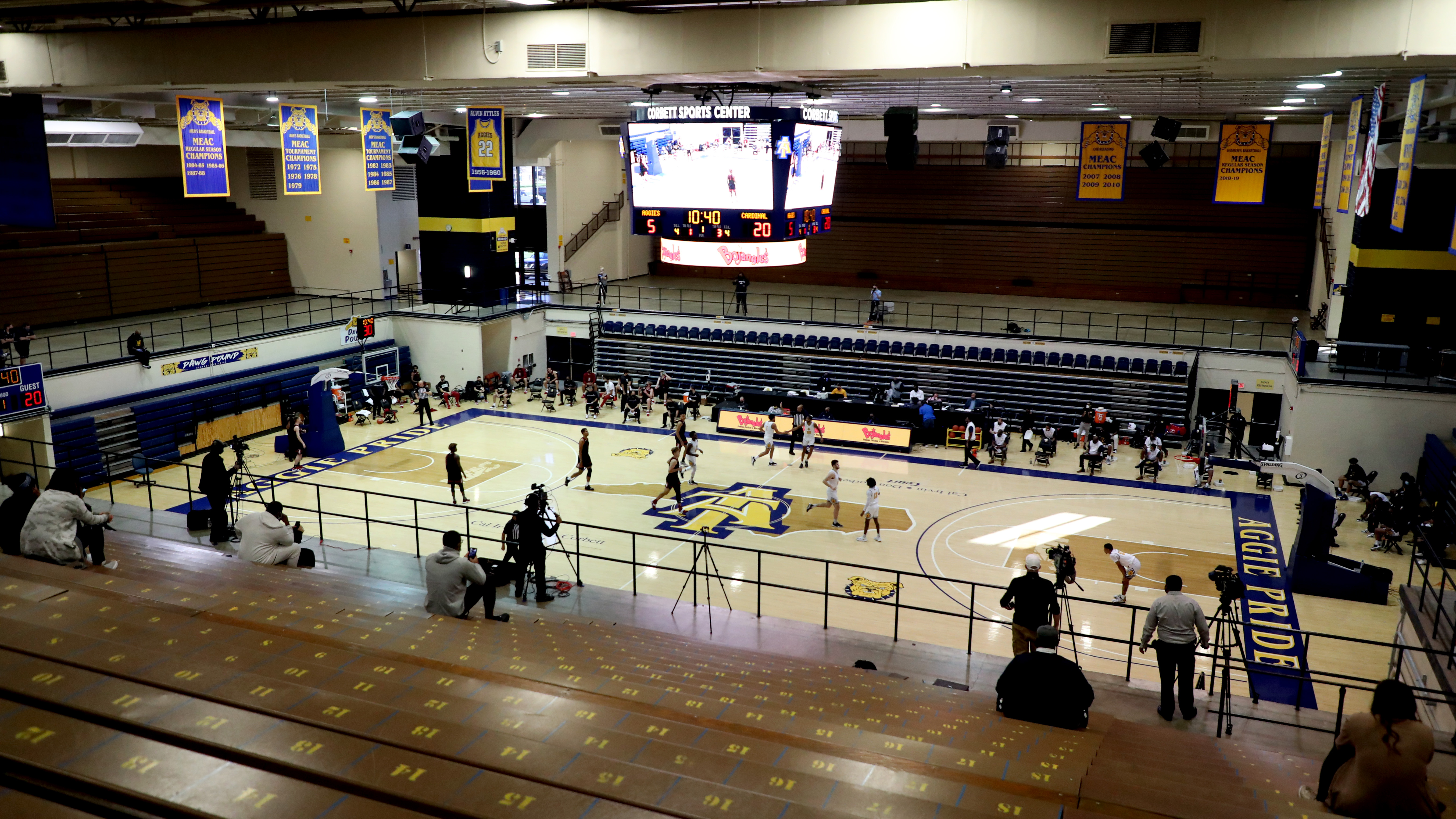Conference play has finally arrived for Stanford men’s basketball (3-2, 0-0 Pac-12). The Cardinal will take on the Arizona Wildcats (5-0, 0-0 Pac-12) in Santa Cruz on Saturday. The game was relocated from Maples Pavilion to Kaiser Permanente Arena due to Santa Clara County COVID-19 guidelines that ban contact sports.
Stanford was supposed to play its first conference matchup on Sunday, Dec. 13, against USC, but a COVID-19 case within the Trojan program forced the postponement of the game. The Cardinal was fortunate to add a matchup against the Cal State Northridge (CSUN) Matadors (3-2, 0-0 Big West), which was played on Tuesday.
Despite being heavy favorites, Stanford had to overcome adversity to edge out the Matadors in Northridge. Senior guard Daejon Davis was out for undisclosed reasons, and the Cardinal were forced to find a rhythm after over a week of rest.
The first half was turbulent, with turnovers and offensive rebounding plaguing Stanford, but senior forward Oscar da Silva’s 17-point first half kept his team up three heading to the locker room. Da Silva’s monster performance continued into the second half, when, with help from freshman guard Noah Taitz and others, the Cardinal began to pull away. Stanford went on to win 82-71 led by a career-high 32 points from da Silva.
Arizona comes into Saturday’s matchup having faced little competition, as reflected by the Wildcats’ 5-0 record. According to teamrankings.com, Arizona has the 200th ranked strength of schedule in college basketball, and they have yet to play a top-100 opponent. The Wildcats’ best win was arguably a 69-61 win against The University of Texas at El Paso (3-2, 0-0 C-USA) — a team that pulled off a substantial upset of Arizona State (4-3, 1-0 Pac-12) earlier this week.
Oscar da Silva of @StanfordMBB in 5 games this season:
— Stats By STATS (@StatsBySTATS) December 16, 2020
20.2 PPG
.679 FG%
.960 FT%
He's the only Division I player in the last 25 seasons to average 20.0+ PPG while shooting 65.0+ percent from the field and 95.0+ percent from the line over his first 5 games of a season.
This Arizona squad lacks the starpower that head coach Sean Miller usually has on his teams due in large part to the loss of four stars — guard Nico Mannion, guard Josh Green, forward Zeke Nnaji and guard Max Hazzard. The three freshmen — Mannion, Green, and Nnaji — all declared for the NBA draft and are currently pursuing professional basketball careers. Nevertheless, Miller was able to bring in one of the top recruiting classes in the country.
One freshman who has been especially impactful early in the season is guard Bennedict Mathurin. Mathurin has posted double-figure performances in four of his first five games and boasts 11.4 points and 5.4 rebounds per game. Fellow freshman guard Dalen Terry has also been important for this Wildcat team, scoring just 5.8 points per game, but adding an impressive 4.4 rebounds and 3.4 assists per contest. Terry is unique in that, while he is only 6-foot-7, he has a 7-foot-1 wingspan, which makes him an immense threat.
Arizona also has three older players who all started their collegiate careers at other schools and now find themselves leading this Wildcats squad. The first is junior guard James Akinjo, who was the 2018-19 Big East Freshman of the Year at Georgetown. Akinjo has been quick to make an impact for the Wildcats, scoring 19 in his Arizona debut and averaging almost 14 points per game.
The second player who didn’t begin his collegiate career at Arizona but is now a major contributor is redshirt junior guard Jemarl Baker, who’s also the high scorer for the Wildcats through the first five games. Baker, who formerly played at Kentucky, showed his upside against Northern Arizona University, going 7-for-9 from long range and scored 33 points. If he can replicate that type of performance in conference play, Pac-12 teams could be in trouble.
Lastly, redshirt sophomore forward Jordan Brown will be making noise in the Arizona frontcourt. Brown, a transfer from Nevada, is already averaging double figures to go along with his seven rebounds per game and has established himself as a very dangerous presence down low.
In comparing these Arizona and Stanford teams, there are many similarities. For one, both teams have a veteran backcourt that thrives on the defensive end, whether it be Akinjo for Arizona or Davis and junior guard Bryce Wills for Stanford. Second, both teams are reliant on freshman contributions despite having relatively experienced, upperclassmen squads. Fans will be watching to see who has more of an impact — Stanford freshmen like forward Ziaire Williams and Taitz or Arizona freshmen Terry and Mathurin.
There are also a few main distinctions between the Cardinal and Wildcats. Most significantly, Arizona is a team largely made up of transfers and freshmen, meaning they’re still learning to play together. For Stanford, however, four of the starting five played together last season and the only additional starter, Williams, was the highest ranked Stanford recruit in the modern era.
Another distinction between these two teams is that Stanford has a clear advantage in the backcourt. If Davis is playing, Stanford can confidently say that it has one of the strongest, if not the strongest, backcourts in the Pac-12. Arizona, on the other hand, has been fortunate to see great play from Akinjo, but is still looking for some consistency from other guards on the team.
In the frontcourt, however, Stanford could face some issues due to an Arizona size advantage. Whether it be 7-foot-1 sophomore Christian Koloko or 6-foot-11 Brown, 6-foot-9 da Silva will have his work cut out for him down low.
Tip-off against the Wildcats is set for 4 p.m. PT on Saturday.
Contact Teddy Solomon at tedsol ‘at’ stanford.edu.
